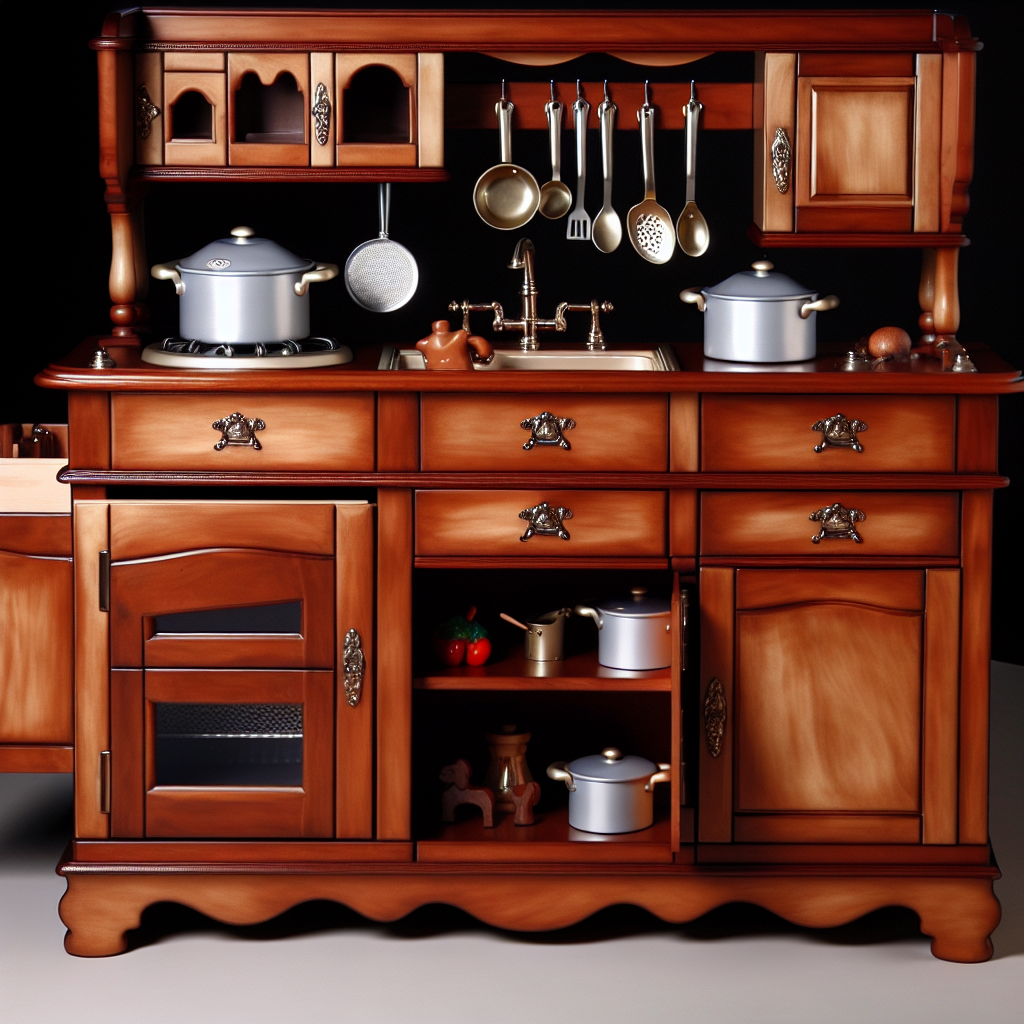Hand-Crafted Heirloom Playhouses: The $100K+ Backyard Statements Replacing Traditional Playground Equipment
A New Era of Backyard Luxury for the Young—and the Young at Heart
In an era where bespoke design meets childhood wonder, a new trend is emerging among families of affluence: artisan-crafted, heirloom-quality playhouses that cost upwards of $100,000. These aren’t your average plastic slides or prefab swing sets—these are miniature architectural masterpieces, redefining what outdoor play looks like in today’s luxury landscape. As more parents seek ways to enrich their children’s lives with purpose-driven experiences and aesthetic surroundings, high-end playhouses are becoming the new centerpiece of curated backyards.
Unlike mass-produced playground equipment, these tailor-made playhouses are built by artists, architects, and skilled woodworkers. They echo the craftsmanship of period homes, treehouse chalets, and even scaled replicas of family estates. With building materials such as reclaimed hardwoods, copper roofing, custom stonework, and eco-friendly treatments, they blur the lines between play and art. Interiors are often outfitted with handcrafted furniture, tiny chandeliers, built-in bookshelves, and climate-controlled systems. Some even include working kitchens, smart technology, and mini plumbing. These spaces are more than simple play structures—they are imaginative retreats where children are encouraged to create, explore, and grow.
There’s also an intergenerational appeal. These playhouses are often designed to stand the test of time, not only in terms of construction but also emotional significance. Many families view them as legacy investments, meant to be passed down through generations. They offer a sense of childhood magic—of slowed-down time and handcrafted warmth—that digital entertainment and screen-focused play miss.
The rising popularity of heirloom playhouses also speaks to a broader shift in parenting priorities. In place of traditional, hyper-commercialized play gear, more parents are seeking individualized, meaningful alternatives that provide both aesthetic pleasure and developmental value for their children. It’s a conscious fusion of elegance, experience, and early childhood enrichment.
Luxury Meets Learning: What the Research Says About Imaginative Play
Research supports the idea that play, especially imaginative and unstructured play, is critical to cognitive, emotional, and social development in early childhood. A 2020 report from the American Academy of Pediatrics (AAP) emphasizes that “play is not frivolous: it enhances brain structure and function and promotes executive function.” Executive function refers to skills such as self-regulation, focus, and memory—abilities that are deeply influenced by engaging environments.
A well-designed playhouse serves as a built environment stimulating rich, narrative-based play. In a 2018 research overview published by the LEGO Foundation, educational experts highlighted how role play or “pretend” play—often inspired by safe, enclosed environments like forts or mini-homes—helps children develop problem-solving abilities and emotional resilience.
From Fantasy to Function: Thoughtful Design that Grows with Your Child
These heirloom playhouses are not just luxury; they are tailored stimulators for development. Their nuanced architecture creates endless possibilities for open-ended scenarios. Pretending to run a tiny bakery, managing a mini art gallery, or hosting imaginary friends for tea in an 8-foot turret gives children practice in social negotiation, creativity, and verbal expression. When playhouses include interactive systems like lighting, music, or cooking appliances, they help build early STEM thinking—how switches function, how water flows, how sequences matter.
Moreover, the calm, sanctuary-like design of many of these playhouses supports emotional regulation and mindfulness. Child psychologist Dr. Laura Markham emphasizes that spaces designed for serenity and autonomy can reduce anxiety and promote self-soothing skills—a critical need in today’s overscheduled, overstimulated childhood environments.
More Than Just Play: Physical Development and Sustainability Benefits
From a physical health standpoint, these playhouses often still include tactile elements—climbing nooks, mini rock walls, soft staircases—that integrate movement, facilitating muscle development and spatial orientation. Unlike traditional playgrounds, which might be ignored over time due to their finite interaction, these high-concept ‘homes within homes’ evolve as the child does. A toddler’s bakery becomes a kindergartener’s reading nook, then a tween’s clubhouse.
Furthermore, the environmental sustainability of many heirloom designs cannot be overlooked. Companies such as Lilliput Play Homes and Charmed Playhouses employ sustainable practices, use non-toxic finishes, and source local materials. This means parents can instill values of craftsmanship, quality over quantity, and ecological stewardship from a young age.
Beyond Beauty: Playhouses as Lifelong Heirlooms and Emotional Anchors
Collectively, these studies build a compelling case: artisan-crafted playhouses aren’t merely status symbols. They are havens for child development, interaction, and serenity. Perhaps most importantly, they embody and instill values that outlast childhood—creativity, continuity, eco-consciousness, and a sense of rootedness.
Final Thoughts: Where Elegance and Enrichment Meet
Hand-crafted, heirloom playhouses are redefining the meaning of luxury for modern parenting. As eye-catching backyard landmarks and arenas of hands-on learning, they offer more than architectural beauty—they serve as developmental sanctuaries. For families of means committed to nurturing their children’s creativity, emotional wellness, and legacy memories, these curated play spaces promise life-long returns rooted in joy, imagination, and timeless design.
Concise Summary:
High-end, handcrafted playhouses costing upwards of $100,000 are becoming the new status symbol for affluent families, offering more than just luxury. These miniature architectural masterpieces serve as imaginative retreats that stimulate child development, promote emotional well-being, and instill values of craftsmanship and sustainability. Beyond being eye-catching backyard landmarks, these curated play spaces promise lifelong returns in the form of joy, creativity, and lasting memories.

Dominic E. is a passionate filmmaker navigating the exciting intersection of art and science. By day, he delves into the complexities of the human body as a full-time medical writer, meticulously translating intricate medical concepts into accessible and engaging narratives. By night, he explores the boundless realm of cinematic storytelling, crafting narratives that evoke emotion and challenge perspectives. Film Student and Full-time Medical Writer for ContentVendor.com



